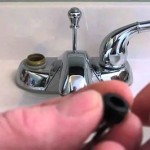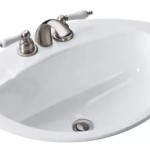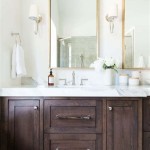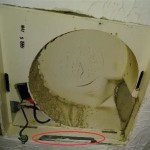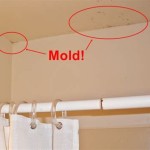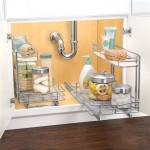Navigating the Selection of a 60-Inch White Single Sink Bathroom Vanity
The 60-inch white single sink bathroom vanity occupies a prominent position in bathroom design, offering a balance between ample storage, counter space, and aesthetic versatility. This size is particularly well-suited for master bathrooms, shared family bathrooms, and larger powder rooms where functionality and style converge. Understanding the nuances of materials, styles, and installation considerations is crucial for selecting the optimal vanity to meet specific needs and preferences.
A 60-inch vanity provides considerable counter space, allowing for the convenient placement of toiletries, decorative items, and essential grooming tools. The single sink configuration maximizes usable area, preventing the cramped feeling often associated with smaller vanities. Moreover, the expansive storage capabilities, often encompassing drawers, cabinets, and shelving, contribute to a clutter-free and organized bathroom environment. The prevalent white finish enhances the perceived spaciousness of the room, reflecting light and creating a brighter atmosphere, regardless of the available natural light. Its neutral tone also provides a versatile backdrop that complements a wide range of color palettes and design aesthetics.
Key Point 1: Material Considerations for Longevity and Aesthetics
The durability and visual appeal of a 60-inch white single sink bathroom vanity are directly influenced by the materials used in its construction. Different materials offer varying degrees of resistance to moisture, scratching, and everyday wear and tear. The choice of material should align with the anticipated usage and the overall design intent of the bathroom.
Solid wood, such as maple, oak, or birch, represents a premium choice for vanity construction. Solid wood offers exceptional strength and durability, ensuring the vanity can withstand the rigors of daily use for years to come. It also allows for intricate detailing and carving, contributing to a more refined and elegant aesthetic. However, solid wood is susceptible to moisture damage if not properly sealed and maintained. Regular sealing and proper ventilation are essential to prevent warping, cracking, or rot. Solid wood vanities typically command a higher price point due to the material's inherent value and the craftsmanship involved in its fabrication.
Plywood, particularly marine-grade plywood, provides a more cost-effective alternative to solid wood. Plywood consists of multiple layers of wood veneer glued together, resulting in a stable and durable material that is less prone to warping than solid wood. Marine-grade plywood is specially treated to resist moisture penetration, making it a suitable choice for bathroom environments. Plywood vanities offer a balance between affordability and durability, making them a popular option for homeowners seeking a budget-friendly yet reliable solution.
Medium-density fiberboard (MDF) is an engineered wood product made from wood fibers bonded together with resin. MDF is a smooth, uniform material that is easy to paint or laminate, making it a versatile choice for vanity construction. MDF is less expensive than solid wood or plywood, but it is also more susceptible to moisture damage. MDF vanities should be carefully sealed and protected from exposure to water. While MDF can be a cost-effective option, it may not offer the same level of long-term durability as solid wood or plywood.
The countertop material is another critical aspect of the vanity's overall durability and aesthetic appeal. Common countertop materials include granite, marble, quartz, and porcelain. Granite and quartz are known for their exceptional durability and resistance to scratching, staining, and heat. Marble offers a luxurious aesthetic but is more porous and susceptible to staining. Porcelain is a non-porous material that is highly resistant to scratches and stains, making it a practical and low-maintenance choice.
Key Point 2: Exploring Diverse Styles and Configurations
The aesthetic impact of a 60-inch white single sink bathroom vanity is heavily influenced by its style and configuration. Different styles evoke distinct moods and complement varying architectural styles. Understanding the nuances of each style allows for a more informed selection process.
Traditional vanities often feature ornate details, such as raised panel doors, decorative moldings, and antique-inspired hardware. Carved legs and intricate accents are common elements of traditional vanity designs. These vanities typically evoke a sense of elegance and sophistication, often complementing traditional or Victorian-style bathrooms. The white finish can soften the formality of traditional details, creating a more approachable and timeless aesthetic.
Contemporary vanities are characterized by clean lines, minimalist designs, and a focus on functionality. These vanities often feature slab-front doors, integrated handles, and a streamlined silhouette. Contemporary vanities are typically made from materials such as MDF or plywood with a laminate or painted finish. The white finish enhances the clean aesthetic and contributes to a modern and airy feel. Floating vanities, which are mounted to the wall without legs, are a popular choice in contemporary bathrooms, creating a sense of spaciousness and ease of cleaning.
Transitional vanities bridge the gap between traditional and contemporary styles, blending classic elements with modern sensibilities. These vanities often feature shaker-style doors, simple hardware, and a balanced proportion of ornamentation and minimalism. Transitional vanities are versatile and can complement a wide range of bathroom designs. The white finish enhances the adaptability of the transitional style, allowing it to integrate seamlessly into various color schemes and design contexts.
The cabinet configuration is another critical factor to consider. Vanities can feature a combination of drawers, cabinets, and open shelving. Drawers are ideal for storing smaller items, such as toiletries and grooming tools, while cabinets are better suited for larger items, such as towels and cleaning supplies. Open shelving provides convenient access to frequently used items and can also be used to display decorative accessories. The configuration should be tailored to the specific storage needs of the user.
Key Point 3: Installation and Plumbing Considerations
Proper installation is crucial to ensure the longevity and functionality of a 60-inch white single sink bathroom vanity. Installation typically involves plumbing connections, electrical wiring (if the vanity includes lighting or outlets), and securing the vanity to the wall or floor. It is often recommended to hire a qualified plumber and electrician to ensure that the installation is performed safely and correctly.
Prior to installation, it is essential to verify the dimensions of the vanity and ensure that it fits properly within the designated space. The plumbing drain and water supply lines must be correctly positioned to align with the sink and faucet connections. It is important to turn off the water supply before disconnecting the old vanity and installing the new one. Flexible supply lines are often used to connect the water supply to the faucet, allowing for some flexibility in placement.
The drainpipe must be properly connected to the sink drain and the existing plumbing system. A P-trap is typically installed to prevent sewer gases from entering the bathroom. The drainpipe connections should be sealed tightly to prevent leaks. Plumber's putty or Teflon tape can be used to create a watertight seal.
If the vanity includes lighting or outlets, a qualified electrician should be hired to make the electrical connections. It is essential to follow all electrical codes and safety regulations. A ground fault circuit interrupter (GFCI) outlet should be installed to protect against electrical shock. The electrical wiring should be properly insulated and protected from moisture.
Securing the vanity to the wall or floor is crucial to prevent it from tipping over. Wall-mounted vanities should be securely attached to wall studs using appropriate hardware. Floor-mounted vanities should be leveled and secured to the floor using shims and screws. The vanity should be stable and secure before it is used.
Finally, consider the accessibility of the plumbing and electrical connections for future maintenance and repairs. Ensure that there is sufficient access to the shut-off valves for the water supply and the electrical junction box. Planning for future accessibility can save time and money in the long run.

60 De Soto Single Sink Bathroom Vanity Bright White

Issac Edwards Collection 60 Single Sink Bathroom Vanity In White Finish With Cultured Marble Top

60 Inch Single Sink White Bathroom Vanity James Martin

60 Inch Single Sink Bathroom Vanity In Cream White Uvbh205060scr60

Wyndham Collection Sheffield 60 In White Undermount Single Sink Bathroom Vanity With Carrera Natural Marble Top The Vanities Tops Department At Com

St Lawrence Cabinets London 60 In White Single Sink Bathroom Vanity With Dover Quartz Top Rona

Home Decorators Collection Mara 60 In W X 22 D 3e H Single Sink Bath Vanity White With Engineered Stone Top 60w The Depot

Spa Bathe Henley 60 In White Undermount Single Sink Bathroom Vanity With Gray Specks Quartz Top The Vanities Tops Department At Com

Ravenna 60 Single Sink Small Bathroom Vanity Set Homebeyond

Wyndham Collection Avery 60 In White Undermount Single Sink Bathroom Vanity With Carrara Marble Natural Top The Vanities Tops Department At Com
Related Posts

